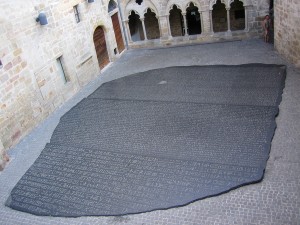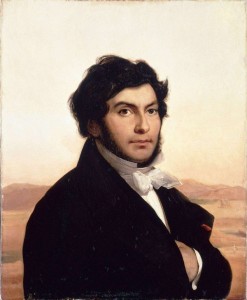Figeac, Le Lot, France #2 8/13
Vivienne insisted we check out the monument to the Rosetta Stone, a tribute to Figeac’s most famous citizen, Jean-Francois Champollion, born in December 1790. If you didn’t know before, he was an outstanding Orientalist whose brilliance enabled Egyptology to make great strides. By the time he was 14 he spoke Greek, Latin, Hebrew, Arabic, Chaldean and Syrian. After his studies in Paris, at the youthful age of 19, he lectured in history at Grenoble University.
He set himself the task of deciphering a polished basalt tablet, showing three different inscriptions, Egyptian Hieroglyphics, Demotic, (simplified Egyptian script), which appeared around 650BC and Greek, (all of which resemble my hand writing). It had been discovered in 1799 by members of Napoleon’s expedition to Egypt near Rosetta in the northwest Nile delta from hence its name – the Rosetta Stone. The original Rosetta Stone was later sized by the English during a war. It is now in the British Museum in London.
At the beginning of the 19th century, Ancient Egyptian civilization was still a mystery since the meaning of hieroglyphics (the word means “sacred carving”), (See, I told you. Just like my hand writing.), had not yet been deciphered. In 1822, Champollion unraveled the mystery of hieroglyphics and then left for Egypt to put his theory to the test where deciphered many texts.
A huge copy of the stone was sculpted in black granite from Zimbabwe by the American conceptual artist Joseph Kossuth. This contemporary work of art is more clearly understood from the hanging gardens overlooking the square near the Figeac market place. The French translation of the inscriptions is carved on a glass plaque kept in a small neighboring courtyard. I’m sure you can Google a translation in English. (They’re still working on my writing.)

This huge replica of the stone was sculpted in black granite from Zimbabwe by the American conceptual artist Joseph Kossuth. Unfortunately we could not read Egyptian hieroglyphics, demotic – simplified Egyptian – script or Greek.












Leave a Comment